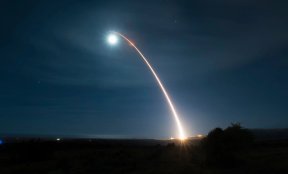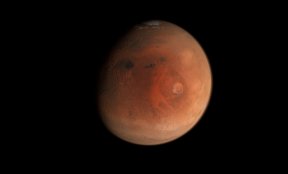Titan is an interesting place. It's the largest moon of Saturn, bigger than our Moon and bigger even than the planet Mercury. It's also the only place besides Earth in the solar system with a dense atmosphere and standing bodies of liquid on its surface. Yes, Titan has rivers, lakes, and seas which sounds very Earth-like. But there is an important distinction. Notice I didn't say standing bodies of water. That's because Titan's seas are full of liquid methane and ethane.
It’s also pretty cold on Titan. Surface temperatures hover around -180°C, but then it is almost 10 times farther from the Sun than Earth is. Along with the liquid hydrocarbons there is water on the surface, but at these cold temperatures it is not liquid, not even ice in the way we think of it. It's rock. As hard as granite.
Also because of the cold, everything happens a bit more slowly on Titan. If there is some kind of weird life Titanian lifeform, it would likely grow and move at a glacial pace. Now we could ask what life on Titan might look like. But we could also flip the question, and ask what life on Earth would look like to a Titanian. Our biological processes would be so fast by comparison that they might not even perceive us. But if they could, we’d appear hyperactive, burning through energy quickly and living short, frenetic lives. And we'd have a superpower worthy of a Marvel movie. We'd be so hot we could melt their rocks on contact.
Apart from speculating on the strange lifeforms, there's something else weird going on there that we've recently discovered. There’s an odd tilt to Titan's atmosphere. It doesn’t appear to rotate in sync with the surface, unlike on Earth, but is tilted and wobbles around a bit like a spinning top or gyroscope. The wobble also appears to be seasonal. Now, this is based on data collected over about six Titan months, or roughly 14 Earth years. So maybe we need a bit more time to figure out what's going on and why the atmosphere seems so disconnected from the surface. Maybe this could be explained if there was some external influence, such as Saturn's gravity tugging on the atmosphere, but astronomers have found that the atmosphere's tilt direction appears fixed in space even as Titan orbits the planet. So, why?
NASA's Dragonfly mission is expected to launch in 2028 and arrive at Titan in 2034. All going well, the probe will make a fully controlled descent to the surface and investigate, you guessed it, habitability and life-forming chemistry. It'd be nice to know beforehand what is going on with the atmosphere, because Dragonfly, which is just an oversized octocopter, will need all the environmental data we can get to calculate its landing trajectory and fly safely around the surface.
At least we have a little time to figure it out.


